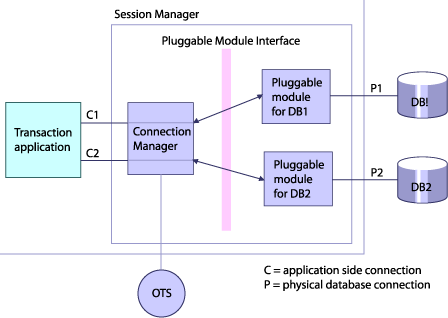|
The commit() interface will be called.
|
|||
|
The xa_close_string() interface will be called for the string used to close the connection. Other necessary calls will be made through the xa switch.
|
|||
|
A string parameter the session manager passes to the getITSDataConnection() call in the pluggable module to get a new connection. This will give the module a way to customize different types of connections it can produce. (See the example included in the product for detail.)
|
When an application calls getConnection() interface (defined in VISSessionManager.idl), it must supply a configure profile name for the session manager connection manager to load the right module and make the connections. So before starting your application, the corresponding configure profiles must be created.
|
1
|
Start osagent.
|
|
2
|
Start smconfig_server.
|
|
3
|
Start smconfigsetup.
|
After starting the smconfigsetup tool, it will give you a list of options that you can use to manage your profiles. Select option 7 to create a configure profile for the pluggable modules. Then you can follow the prompt to give all your information defined in the above table in order. The tool will save the profile in the specified location for session manager.
The function GetITSDataConnection() is defined as follows:
The return value is a pointer to an object of type ITSDataConnection which contains the connection related interfaces that a pluggable module should implement.
When called, it returns a string used as argument to xa_open() call.
When using the DirectConnect profile, the following operations should not be called in the application: “Connection Operation”, “Transaction Operations”, and “Implicit Operations”. Similarly, there is another set of programming restrictions when using the XA profile. See “Programming restrictions” and “Programming restrictions” for more information.
In any plug-in session manager, the VISSessionManager::Connnection::isSupported() API will have static return values. In the case of DC connection, isSupported(“hold”) will return true and isSupported("thread_portable") will return true. In the case of XA connection, isSupported("hold") will return false and isSupported("thread_portable") will return false.
In any plug-in session manager, the VISSessionManager::Connection::getInfo("version_rm") will now return NULL. As the information is not applicable in the case of a plug-in session manager.
